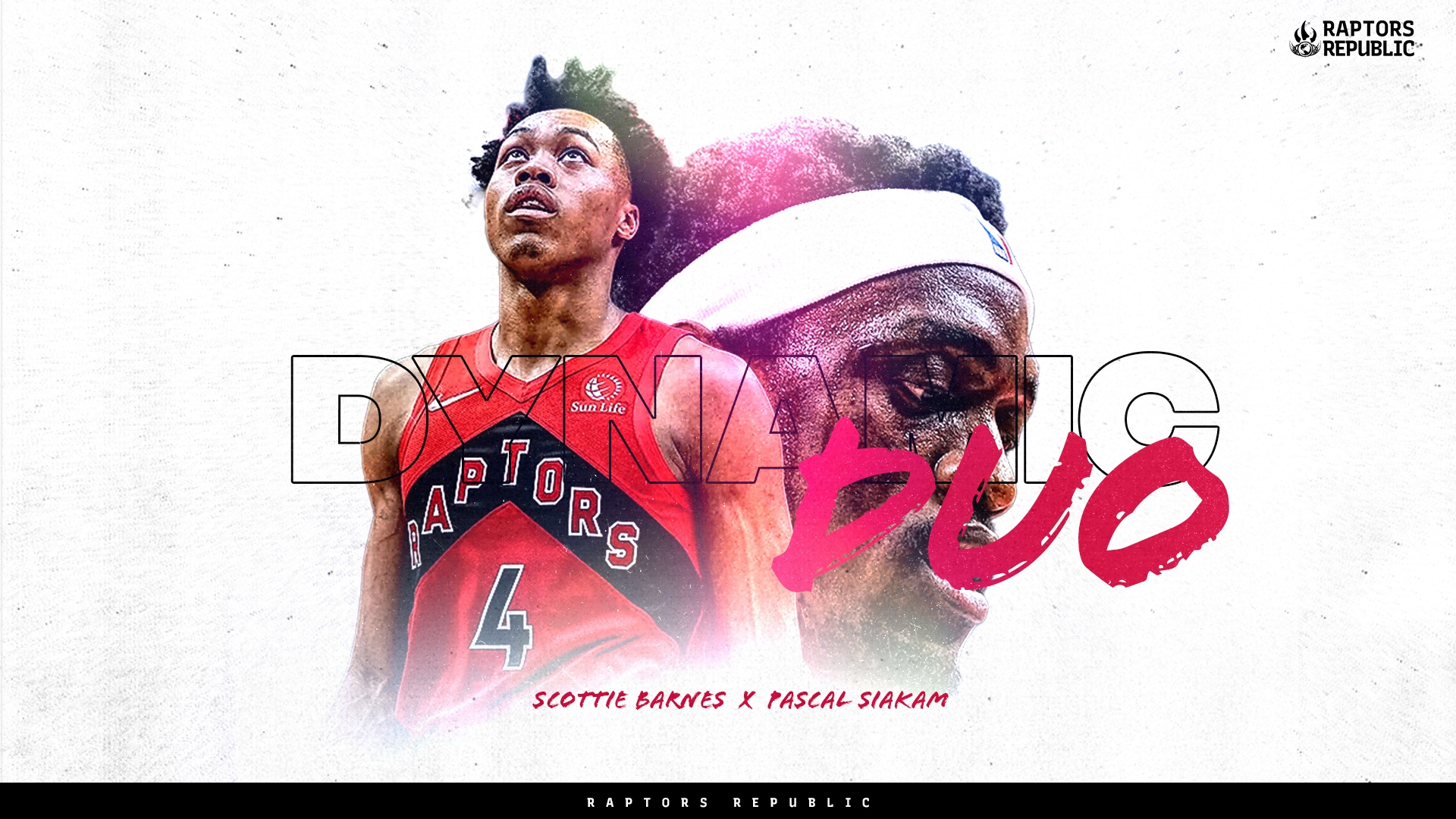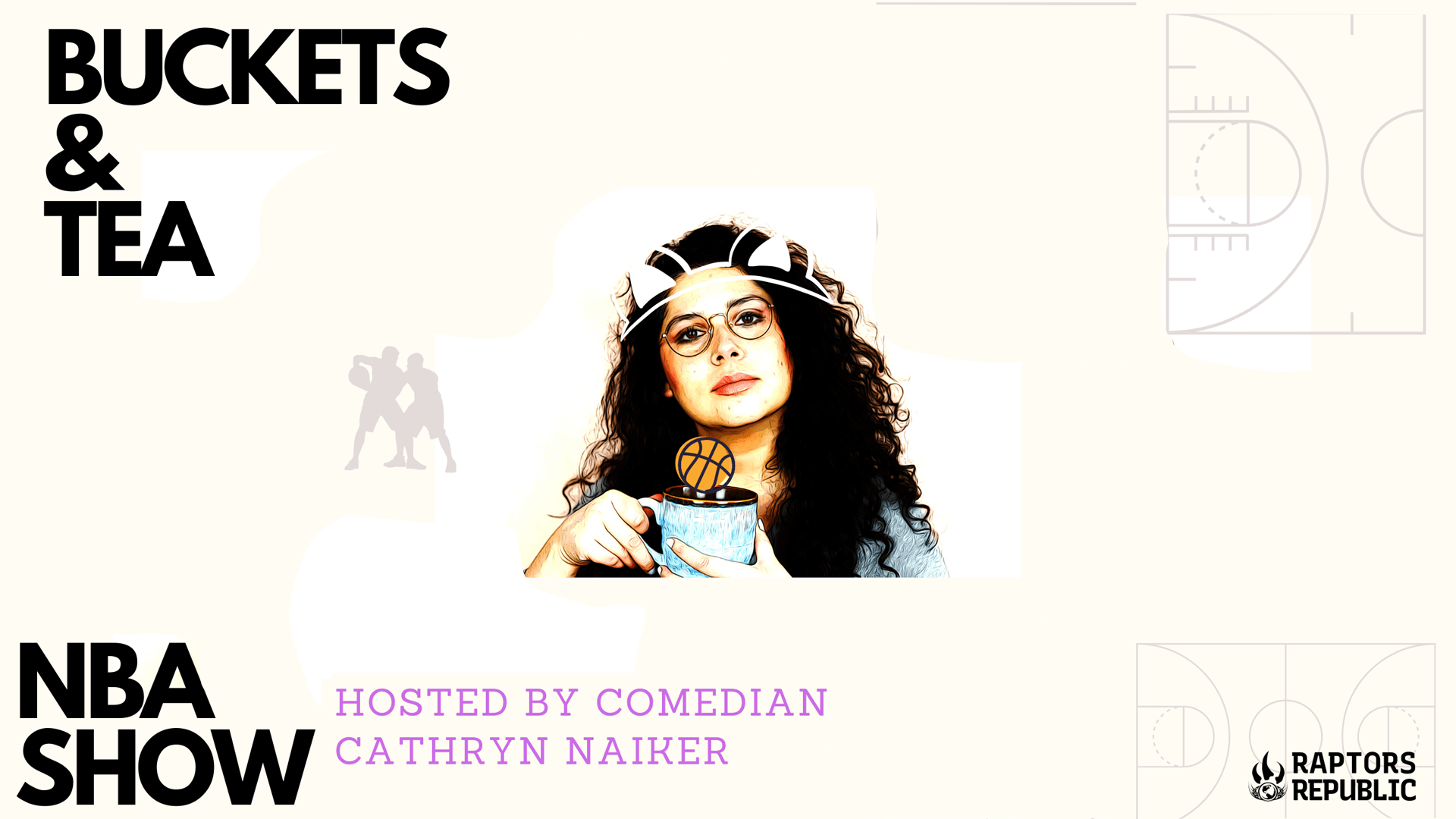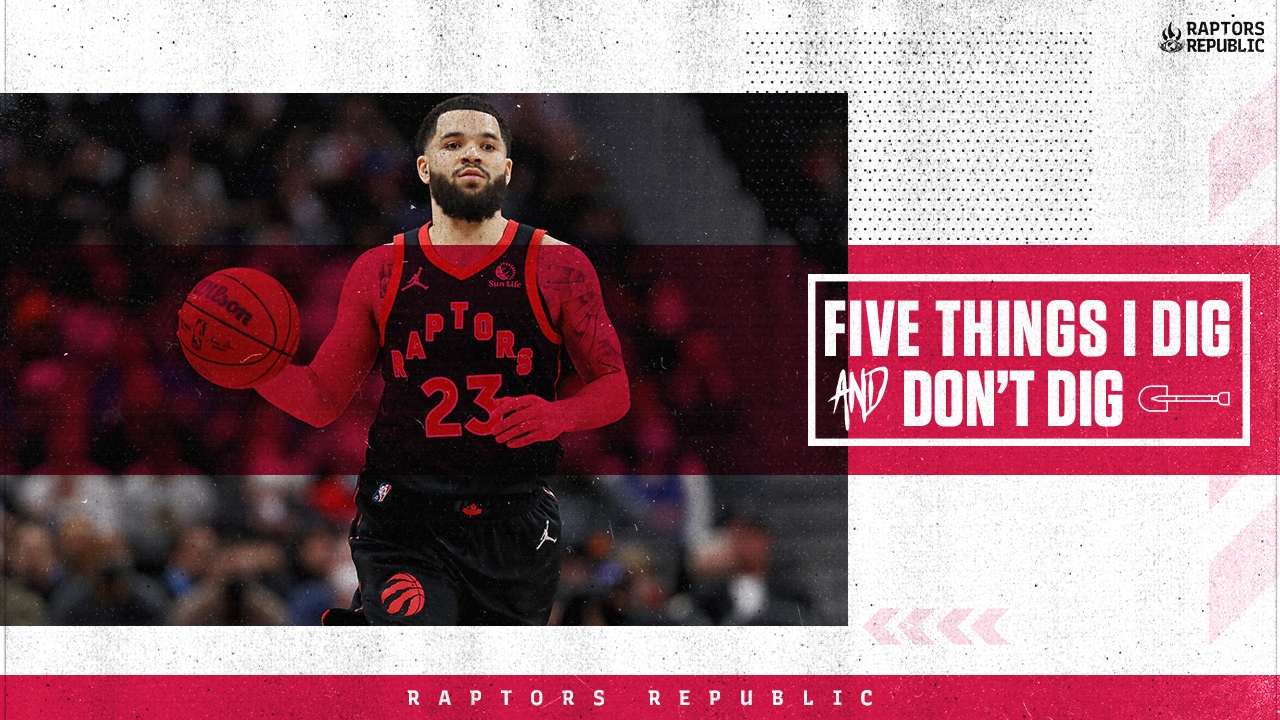On December 6th at a Raptors 905 game, the young guns played, but in the stands Scottie Barnes eagerly called for Pascal Siakam’s attention, and eventually got him to dap up. He recorded this moment, and his text over the video said: “Just got a handshake from my favorite player”.
“That’s my favourite player. I was in the stands, I saw him, I just wanted to touch his hand, it was a good moment for me,” Barnes said about his interaction with Siakam. “The amount of hard work and effort he puts in every single day. He comes to the gym extra early, and then when you see him on the court, he’s just really good, is able to get to his spots and score. He’s also a great defender.”
Some of that is Barnes having fun with a situation of course, but there’s a clear fondness between the two of them, and the synergy extends onto the court as well. A clear case of how talent greases the wheels of any basketball interaction, Barnes and Siakam have skirted traditional convention that rules partnerships in the NBA. They’re fundamentally different than Steph Curry/Draymond Green, Donovan Mitchell/Rudy Gobert, James Harden/Kevin Durant, hell, even Siakam/VanVleet. They don’t have the pull-up shooting that the other duos have, so they seek other means of creation for one another.
The high-low feed. It’s in every tall playmaker’s bag, and only tall playmaker’s bags – well, maybe Ja Morant’s generational in-air passing allows him to do it. The ability to see and pass over defenses due to their length and height, and by proxy of that, make more direct passes that aren’t available to other players. The higher the ball is off the floor, the less contested the air space is. The less time the ball spends in the air, the less chance to steal it. Both Siakam and Barnes ping the high-low feed to teammates, and especially each other. Rotations are less effective, bounce passes are more unpredictable, and the synergy can only grow with time.
Between these two, there’s almost always an opportunity to dominate or overwhelm a defender.
At this point in their careers, Siakam commands more attention from defenses and bends them into more uncomfortable positions. He consistently gifts advantage to others, and the gravity of his possessions creates a playground for Barnes to cut in. Siakam is much less frenetic as a cutter in the halfcourt, choosing to hover to support reset possessions. However, when they run set actions to turn Siakam loose, Barnes is exactly the caliber of passer that can put the Raptors best play finisher in winning positions. And in transition, Siakam is a more than willing runner for Barnes, and has clearly grown to revere Barnes’ decision making in the open court – as he should.
“He wants to compete, I think that’s what the team got him for – a guy that wants to win and compete. He’s not afraid of going out there and playing against the best. The sky is the limit for him.” – Pascal Siakam on Scottie Barnes
On a Raptors team that has very little in the way of spacing, and even less offensive structure, passes into assists for anyone outside of Fred VanVleet come strictly via brute offensive manipulation. Nurse has been reluctant to throw screen assistance at Siakam – even going back to his All-NBA 2nd team season – instead choosing to ask for a near league-high usage in isolation. Anunoby has been subjected to a similar existence in his attempted jump towards stardom, and Barnes takes on more isolation possessions than every rookie not named Cade Cunningham – who was considered one of the most complete offensive prospects to enter the league in some time.
The missing piece is obviously the three-point shooting from both parties. Barnes has seen incredibly high, highs and equally as low, lows. Siakam has been slowly climbing back toward respectability from downtown as the season creeps along. 28-percent from downtown over his first 18 contests, 42-percent over his last 15. He’s been slightly more selective from downtown, turning some of the possessions into layups or assists instead of 3-point attempts. Barnes also allows Siakam to slide back into the type of 3-point shots that coincided with his MIP and breakout year – the set kind. Both players attract heaps of attention and create wide open looks from deep. Barnes supplies Siakam with the second most looks from downtown and he shoots 53-percent on those. From Siakam to Barnes? 42-percent. A promising start of course, but there’s a lot of room for growth.
In an offense that urges (forces?) players to do it themselves, Siakam and Barnes have mined pockets of opportunity for moments of genius. With the Raptors halfcourt offense hitting dangerous lows in January, Barnes’ rim attempts fell off a cliff and his efficiency from the mid-range waned. But, this piece isn’t about the numbers, it’s about finding meaningful jumping off points for progression in the film.
Siakam was in trade rumours in the summer, but his return back to All-NBA form and the exceptional performance of the Raptors core has opened up a new avenue toward competing. Barnes looks like he could be a star on a rookie contract, and he and Siakam’s partnership looms large in the Raptors future.
A partnership that many thought was doomed from the start has blossomed into this, and hopefully more. They’ve forced each other to change somewhat, and to do things differently. One thing remains clear though: that change isn’t done in a desolate environment of uncaring. They’re both operating as a guiding hand towards progression for one another. That’s what talent and a willingness to grow will do.
All stats are via NBA(dot)com and cleaningtheglass(dot)com.
If you’d like to read more about each player individually, you can do so here (Scottie) and here (Pascal).
Have a blessed day.



